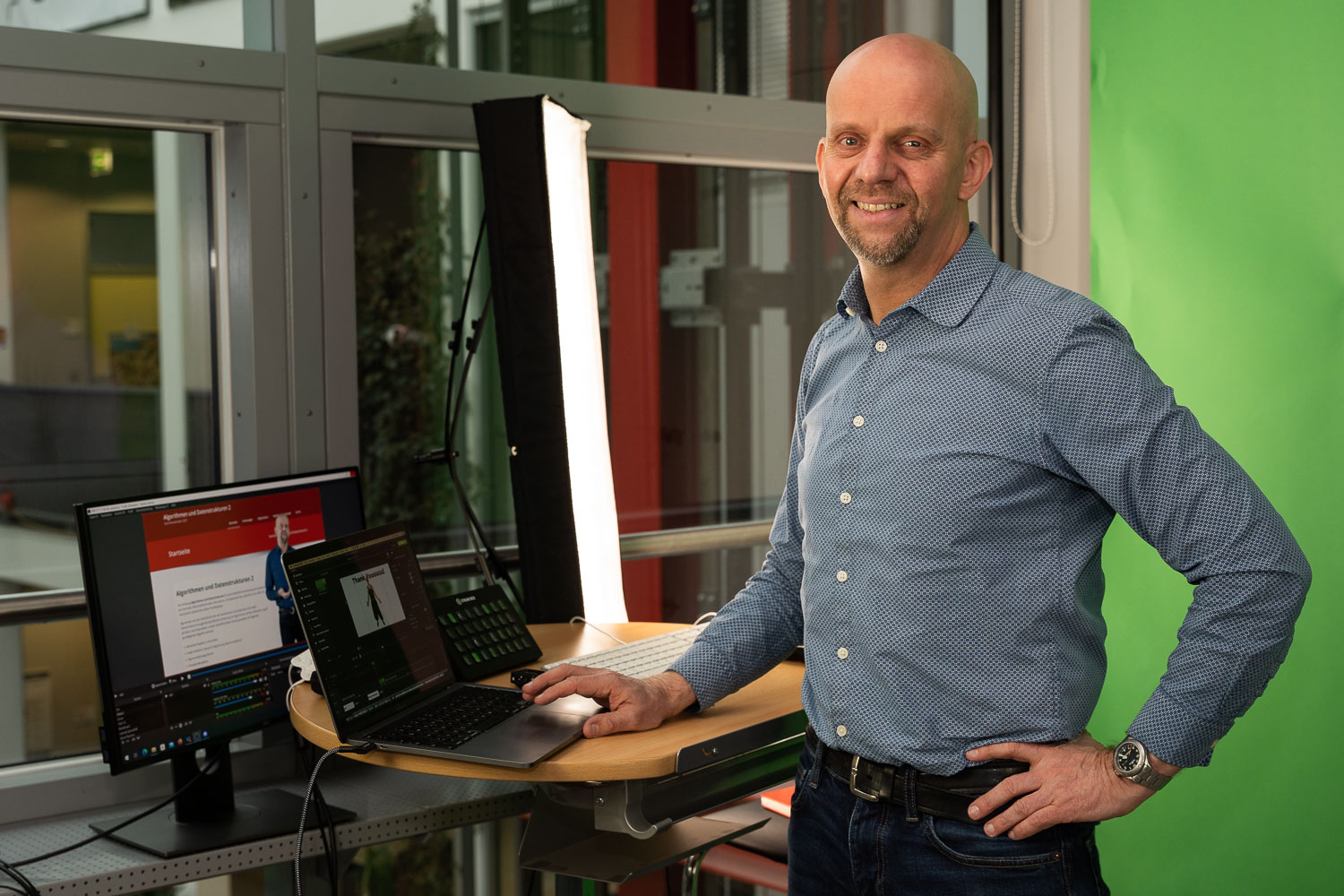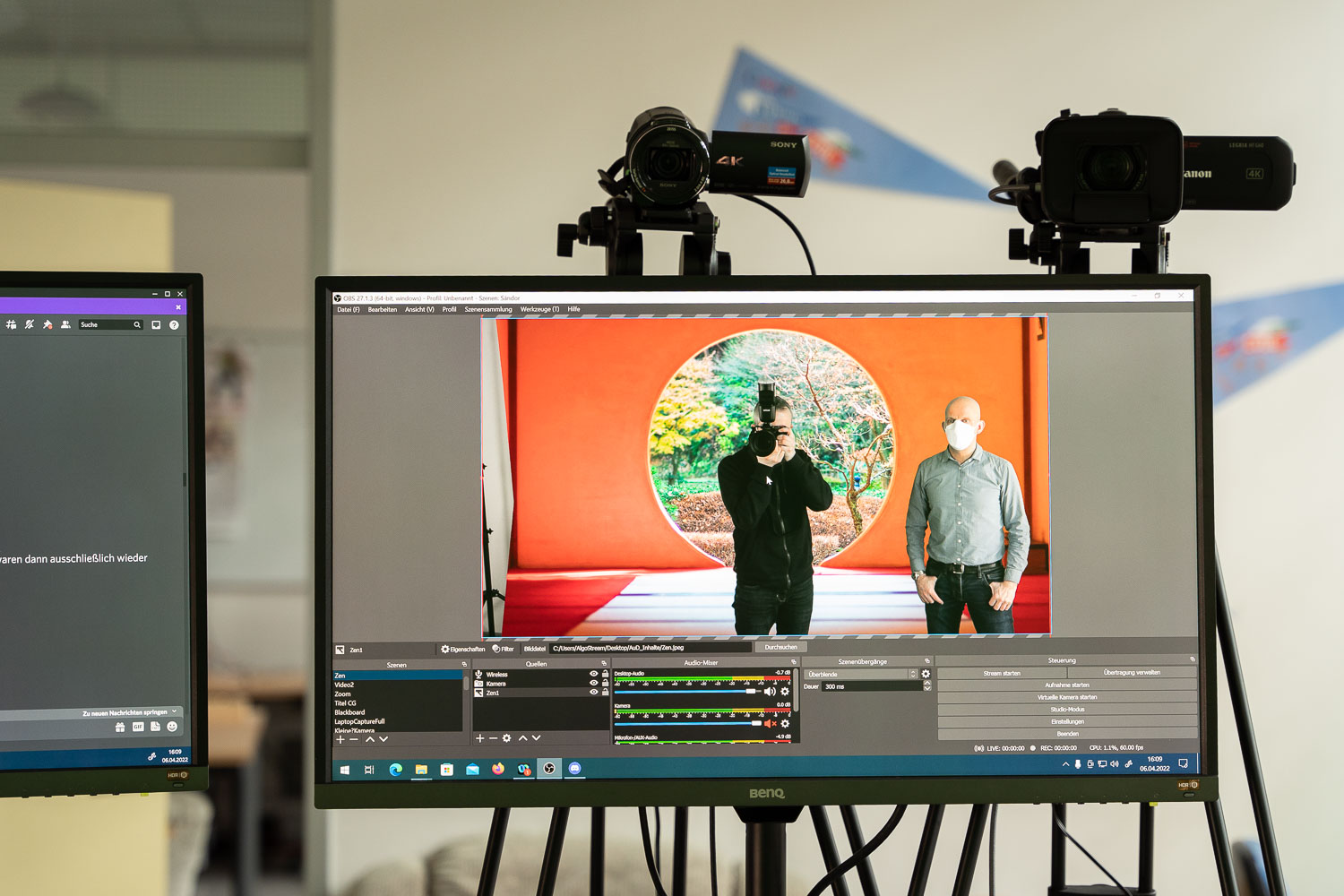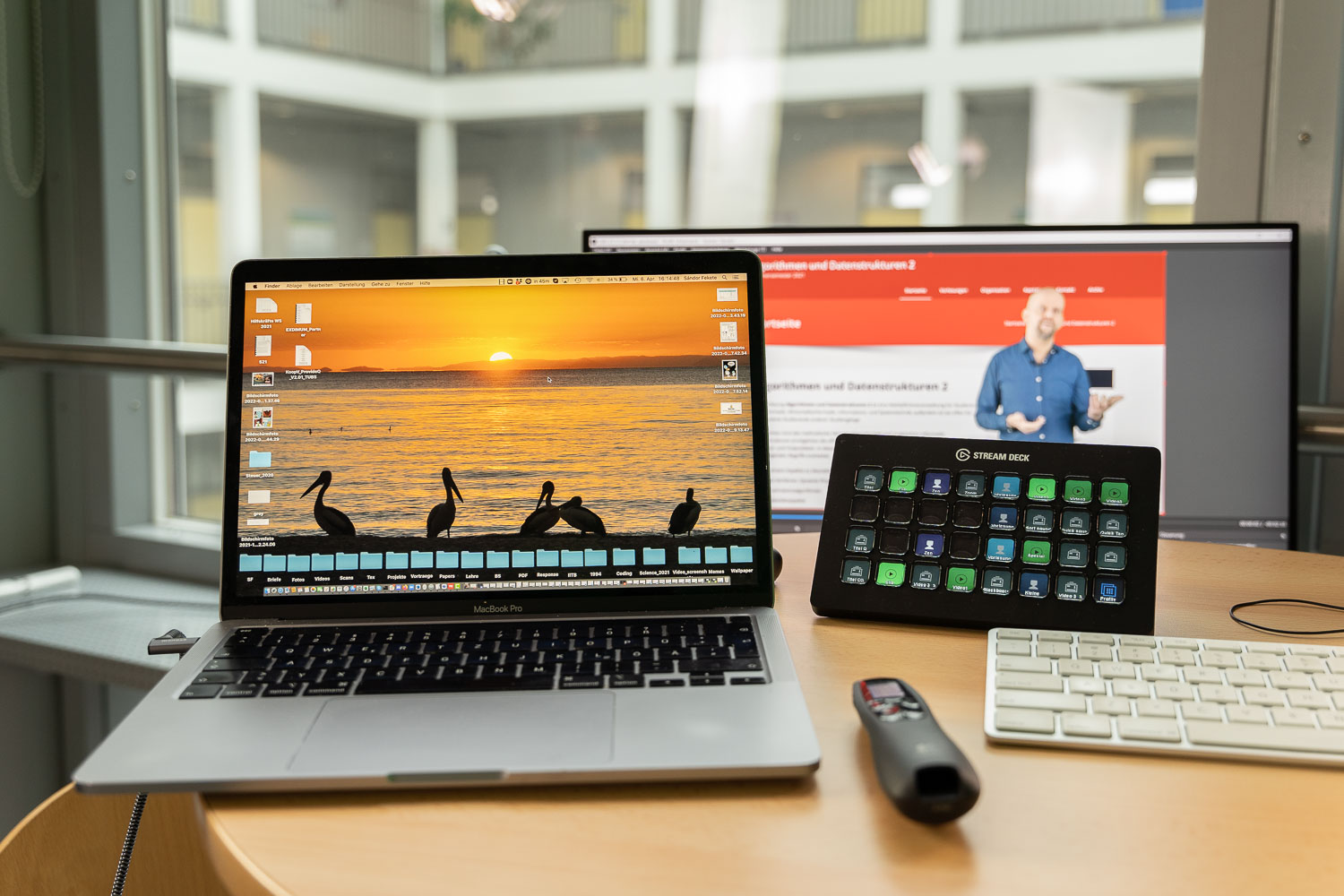Digital teaching: almost the same, only in green A visit to the studio of the Algorithms Group at the Computer Science Building
For months during the Corona pandemic, it was the only way to keep teaching going at Technische Universität Braunschweig without the risk of infection. Digital teaching was suddenly omnipresent in 2020. We have long since become accustomed to video conferencing via “BigBlueButton” and other systems. But the question is how to get digital formats up and running most efficiently without spending a lot of time on elaborate video productions. We visited a place in the Computer Science Building where this can be done quite easily.
Professor Sándor Fekete and his team have set up the Algorithms Group’s own studio in the Institute of Operating Systems and Computer Networks for the implementation of digital teaching and have been continuously developing it further. In the early days of the Corona pandemic, they considered which formats could be implemented technically and how, he says. And how to offer the students something that goes beyond a simple presentation.

Professor Sándor Fekete in the studio of the Institute of Operating Systems and Computer Networks (IBR). Photo credit: Markus Hörster/TU Braunschweig
A great time saver
The studio is equipped with technology that enables live broadcasts of lectures. It is precisely this live experience that makes the concept interesting for students and enables digital teaching that is close to the real lecture hall. At the same time, it helps teaching staff to save time: a live production can be realised in real time, unlike a pre-produced video. At the same time, the interlocking of digital tools means that the teaching staff do not have to rely on the enormous personnel costs of a classic television studio, but that normal teaching assistance is sufficient. “Of course, we communicated a lot with the students, especially in the beginning, to make sure everything worked and no one from the audience got lost. For this, we always had someone available live for digital support,” explains Professor Fekete.

The teaching staff (and, as here, the photographer) can enter virtual rooms with the help of two cameras. Photo credit: Markus Hörster/TU Braunschweig
Especially in digital teaching, it is important to interact with the students during the course. Further digital aids such as a live quiz or a live chat help with this. “The students already use tools such as ‘Discord’, which is known from the gamer community, on an ongoing basis anyway, so they are used to it,” says Fekete. The chat is not only valuable for content reasons, but the students also point out technical errors there that a lecturer would otherwise not notice. “Of course, the use of all tools by the students is voluntary. In principle, all lectures are also available in video form via the institute servers, without having to rely on special software or services.”
A lot of technology, but no witchcraft
The freely available open source software “OBS Studio” is used for streaming in the studio. The programme is available for all common desktop platforms (Windows, Mac, Linux) and works like a virtual webcam. Chroma keying, i.e. cropping a person in front of a special green background, fading in graphic elements and integrating screen recordings or videos, is possible with just a few clicks. The output signal can thus be easily fed into any video conferencing solution or YouTube, and can also be recorded locally on the computer.

With a laptop, content such as presentations can be integrated into the live broadcast. A small add-on device allows many functions to be controlled at the touch of a button. Photo credit: Markus Hörster/TU Braunschweig
The lecturer is visible to the audience and can enter the virtual space as if they were in the lecture hall. “I used to act in the theatre during my studies. Of course, that helps me with moving in front of the camera,” Fekete says. In principle, however, previous experience is not necessary. The important thing is to approach it with a positive attitude and without fear.
Mastering studio technology is a prerequisite for a successful digital course, but it is not witchcraft. Especially in computer science, most people have a high affinity for technology anyway and quickly find their way around, says Fekete.

A sight almost like television: Monitors, cameras, light and a green screen. A lot of technology is needed for a live stream. Photo credit: Markus Hörster/TU Braunschweig
The studio can also be used by other teaching staff at TU Braunschweig by prior arrangement. For example, it was used in June for the nationwide “Digitaltag”, in which the university participated together with the city of Braunschweig. Together with Professor Martin Eisemann from the Institute for Computer Graphics, training sessions are also available for those interested. As part of the ProDiGI (Promoting Digital education through Global Interconnection) project, there is even funding to set up similar studios at all faculties of TU Braunschweig.
